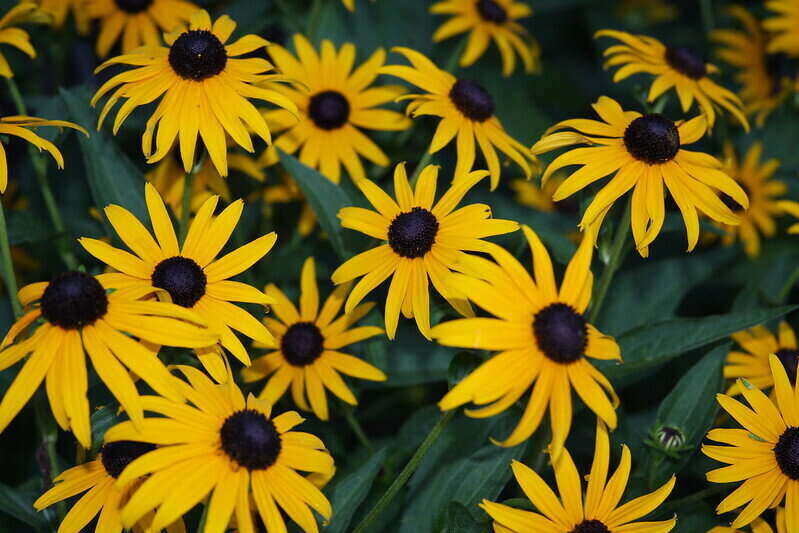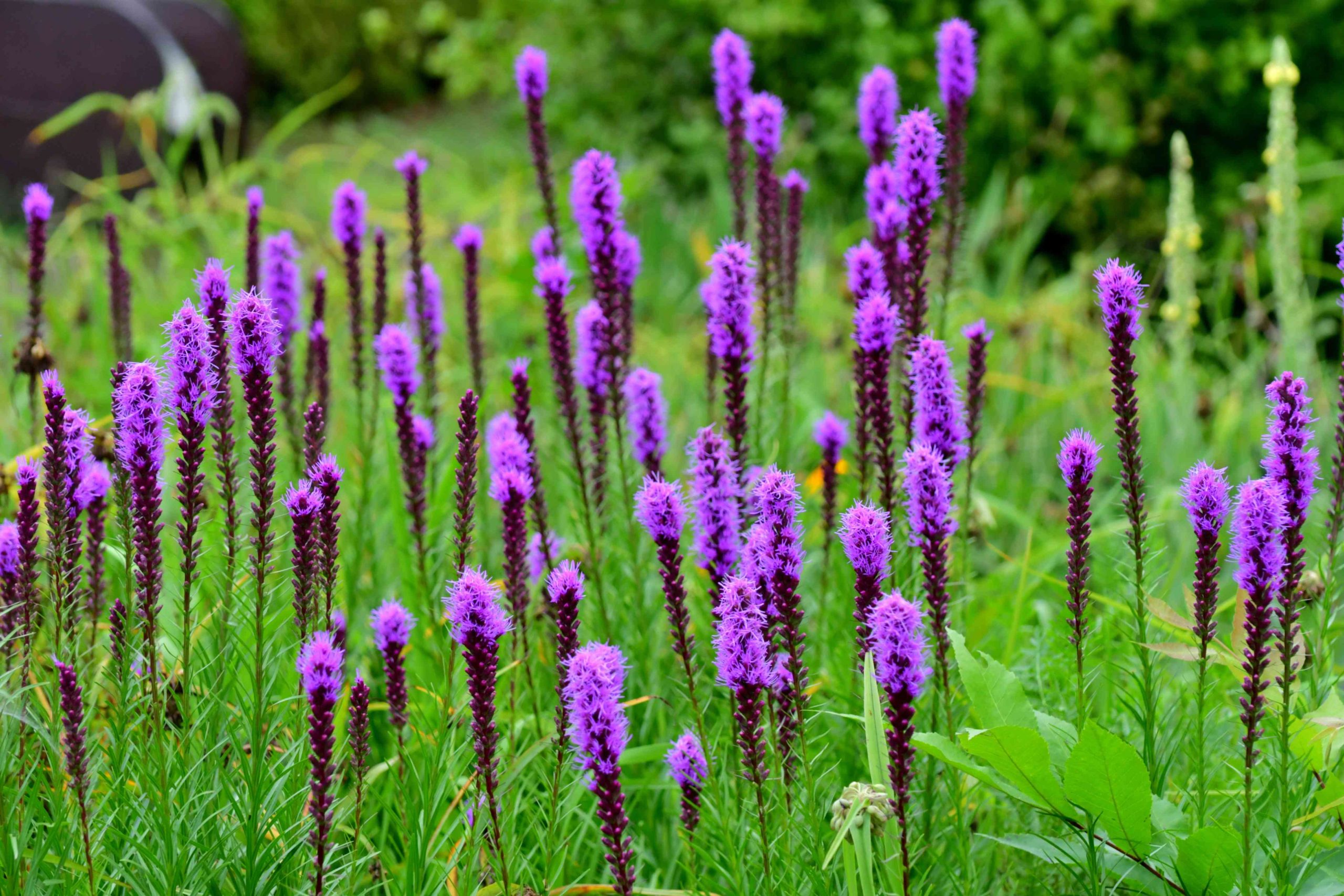Gardening in clay soil can be frustrating Dense, sticky clay is tough for roots to penetrate and tends to become waterlogged But don’t despair – with the right plant choices, you can have a thriving garden even in heavy clay soil!
Certain plants are naturally adapted to the unique challenges of clay. Here are the top performers to consider:
Flowers That Grow Well in Clay Soil
Bee Balm
Bee balm (Monarda spp) is a very versatile perennial. It comes in a variety of colors like red, pink, purple and white Bee balm thrives in moist clay soil but also tolerates short periods of drought once established. The nectar-rich flowers attract pollinators like butterflies and hummingbirds.
Black Eyed Susans
A classic American wildflower, black eyed Susans (Rudbeckia spp.) are another clay-tolerant plant. Their daisy-like yellow flowers bloom all summer long. Some varieties grow over 3 feet tall! Black eyed Susans prefer consistently moist soil so clay’s water retention is ideal.
Cardinal Flower
With its vibrant red blooms, cardinal flower (Lobelia cardinalis) adds a pop of color to gardens. It grows 2-4 feet tall on sturdy stems. Cardinal flower naturally inhabits streambanks and wet meadows so it appreciates clay soil’s moisture retention. Just don’t let it dry out completely.
Iris
Bearded iris varieties are some of the most familiar flowers around. The sword-like green leaves spread to form clumps. Bearded iris thrives in clay’s dense composition and won’t rot. Moisture-loving Japanese iris (Iris ensata) also grows well in clay.
Astilbe
Astilbe is a shade garden superstar. The feathery flower plumes come in white, pink, red, purple and more. Astilbe spreads aggressively once established. It prefers consistently moist soil, so clay’s water retention capacity keeps it happy.
Trees & Shrubs to Plant in Clay Soil
River Birch
River birch (Betula nigra) is a fast-growing, medium-sized tree. It has peeling cinnamon-colored bark that adds visual interest. River birch can tolerate occasional wet clay soils better than drought. Thankfully, its roots tend to stay shallow and don’t interfere with foundations or pipes.
Serviceberry
Serviceberry (Amelanchier spp.) thrives in moist clay soil while also being quite drought tolerant. White spring flowers give way to edible sweet berries. Serviceberry comes in tree and shrub forms. Varieties like ‘Autumn Brilliance’ have beautiful fall color ranging from red to orange.
Ninebark
A tough, adaptable North American native shrub, ninebark (Physocarpus opulifolius) is a great choice for clay soil. Ninebark grows in sun to part shade in all types of soil. It produces clusters of pretty white blooms in spring. Look for varieties with colorful foliage like ‘Dart’s Gold’ or ‘Diabolo’.
Butterfly Bush
The cone-shaped flowers of butterfly bush (Buddleia spp.) act as a butterfly buffet! Butterfly bushes thrive in clay soil, tolerating both wetness and moderate drought. Some varieties can grow quite large, so give them plenty of room. Cut them back each spring to promote lush new growth.
Grasses That Grow Well in Clay
Fountain Grass
A standout ornamental grass, fountain grass (Pennisetum) adds fluid movement and height. The arching foliage cascades like a fountain. Showy plumed flower heads appear in summer and last into fall. Fountain grass tolerates a range of soil moisture levels once established.
Maiden Grass
Maiden grass (Miscanthus sinensis) is valued for its interesting seed heads and silvery-tan foliage. It can form impressive clumps 4-6 feet across! Maiden grass does best in moist clay but accepts drought conditions too. Just give it plenty of sun.
Groundcovers Perfect for Clay Soil
Sweet Woodruff
Sweet woodruff (Galium odoratum) makes an attractive, fast-growing groundcover. The whorled white flowers and fragrant leaves work well beneath trees and shrubs. Sweet woodruff thrives in clay’s nutrient density. It spreads aggressively and appreciates consistent moisture.
Wild Ginger
Don’t let the name confuse you – wild ginger (Asarum canadense) isn’t edible. But it does make an excellent shade tolerant groundcover. The heart-shaped leaves remain evergreen in warmer zones. Wild ginger spreads slowly to form a dense mat. Its unique flowers hide under the foliage.
Lilyturf
An Asian evergreen perennial, lilyturf (Liriope spp.) handles clay soil with ease. Its arching grass-like foliage stays attractive year round. Violet flower spikes emerge mid-summer. Lilyturf spreads readily, making a tough weed barrier. Just give it light shade and medium moisture.
Clay Loving Vines & Climbers
Climbing Hydrangea
This attractive vine clings and climbs up structures using aerial rootlets. Climbing hydrangea’s (Hydrangea anomala) large white summer flower heads contrast beautifully against weathered wood or stone. It tolerates clay soil’s moisture fluctuations but appreciates compost additions to lighten dense clay over time.
Clematis
Many clematis vines thrive in clay, as long as the soil doesn’t get severely waterlogged. Plant crowns need good drainage. But their roots appreciate clay’s cool moisture and nutrient levels. Pick a site with partial shade to avoid stressed roots. Cut vines back each spring to promote vigorous regrowth.
Trumpet Honeysuckle
Trumpet honeysuckle (Lonicera sempervirens) handles various soil types. In clay soil, regular moisture is key. The orange-red tubular flowers appear from summer into fall, attracting hummingbirds. Only semi-evergreen in cold climates, trumpet honeysuckle adapts well to clay’s “stickiness.”
By picking plants naturally adapted to clay soil’s unique challenges, you can create a vibrant garden sanctuary without having to amend the soil. Any of the plants above will reward you with vigorous growth and gorgeous blooms in heavy clay.
Black-eyed Susan

Black-eyed Susans do great in clay soil gardens. They make daisy-like, yellow flowers with black centers and sit atop tall stems. This clay-busting perennial plant is a garden staple because it’slow maintenance and very adaptable.
They stay alive for years and bloom for months, which makes them a great addition to cottage gardens, perennial borders, prairies, or naturalized areas. Black-eyed Susans spread quickly, but aren’t invasive, and give your garden a long-lasting color. This versatile plant doesn’t mind heat or cold and grows easily in many different planting zones.
Botanical name: Rudbeckia
Plant type: Perennial
Flower color: Yellow, orange
Mature plant height: 2-3 feet
Maintenance needs: Very low
Blooming time: Early summer
Ideal growing conditions: Full sun with well-drained, moist soil
USDA hardiness zones: 3-9
Eulalia grass

Eulalia grass is one of the most popular ornamental grasses. It is self-seeding and clump-forming and can become a nuisance if not managed properly. Like many ornamental grasses, it does very well in clay.
You can make a pretty shrub border with small fountain grass, medium-sized silvergrass, or large pampas grass. You can also use them to give your perennial clay garden more texture, color, and movement.
Botanical name: Miscanthus
Plant type: Perennial
Flower color: Silver, copper
Mature plant height: 3-7 feet
Maintenance needs: Moderate
Blooming time: Late summer to fall
Ideal growing conditions: Full sun to part shade and well-drained soil
USDA hardiness zones: 5-9
Best Plants For Clay Soils (Top 5)
What type of soil is best for a garden?
One common soil type is clay, or heavy clay. When some gardeners see clay soil – they run a mile. And clay soil certainly does bring its challenges. But manage and improve it correctly, and choose the right plants, and you can definitely still have a delightful and successful garden. My own garden has a neutral to slightly acidic clay-loam soil.
What plants grow well in clay?
Many of these plants have evergreen leaves or colourful berries too. Flowering shrubs like Weigela, Buddleja, Forsythia, Hydrangea, Chaenomeles (flowering quince) will grow well in clay. Roses are also good shrubs for clay especially if it has been improved with organic matter. Some are even tolerant of wet soils, including the rugosa group.
Are clay soils good for a garden?
Clay soils bring many gardeners out in a cold sweat. They have a reputation as back-breaking and impossible to work with. But the truth is that it can be truly brilliant in a garden. They are rich in nutrients and retain plenty of moisture – two important things that plants need to grow well. In fact, many plants thrive in these conditions.
What should I plant in a clay soil site?
It is particularly crucial in a clay soil site. You should: Plant ‘thirsty’ trees and shrubs to sup up excess water from the soil. Including plenty of deciduous trees, shrubs and herbaceous perennials that will provide sources of organic matter. Add plenty of plants in general to soak up and store water, and avoid bare soil.
- The Ultimate Guide to Growing Strawberries in Raised Beds - August 8, 2025
- No-Dig Garden Beds: The Easiest Way to Grow a Beautiful Garden - August 6, 2025
- How to Protect and Preserve Wood for Raised Garden Beds - August 6, 2025

